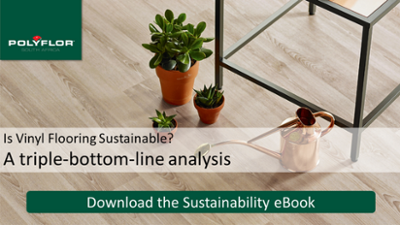Sick building syndrome (SBS) is a medical condition where people in a building suffer from symptoms of illness or feel unwell for no apparent reason.
The symptoms tend to increase in severity with the time people spend in the building, and improve over time or even disappear when people are away from the building. The main identifying observation is an increased incidence of complaints of symptoms such as headache, eye, nose, and throat irritation, fatigue, and dizziness and nausea. Can you afford this in your business? What can you do to help mitigate this risk?
What is SBS?
The term Sick Building Syndrome (SBS) was coined by the World Health Organisation (WHO) in 1986 when they estimated that 10-30% of newly built office buildings experienced indoor air quality problems. SBS is used to describe situations in which building occupants experience acute health and comfort effects that appear to be linked to time spent in a building, but no specific illness or cause can be identified. SBS may be localised to a particular room or zone or may be widespread throughout a building.
What are the common symptoms of SBS?
Headache, dizziness, nausea, eye, nose or throat irritation, dry cough, dry or itching skin, difficulty in concentration, fatigue, sensitivity to odours, hoarseness of voice, allergies, cold, flu-like symptoms, increased incidence of asthma attacks and in some cases, personality changes.
What causes SBS?
Common causes are thought to include:
- Poor ventilation
- VOC emissions from inside the building
- Chemical contaminants from outside the building (exhaust fumes etc.)
- Physical contaminants from outside the building (dirt, allergens etc.)
- Physical contaminants in the building (fungi, mites, allergens, infectious germs, sloughed off skin cells etc.)
- Dust
- Odours
How can Polyflor products help combat SBS?
While Polyflor products cannot combat all the contributors to SBS they can counteract the following:
VOC emissions from inside the building.
Polyflor ranges have undergone many independent and rigorous VOC tests. The most recent test method by Eurofins, the ‘Indoor Air Comfort’ test, is the most comprehensive and stringent within the industry, worldwide, and tests for all known emissions. Polyflor products tested to date have achieved Indoor Air Comfort Gold, the highest level of air-comfort achievable in this test. Gold rating means that the product meets all required standards and shows additional compliance of product emissions with the criteria of many of the voluntary specifications issued by most relevant ecolabels and similar specifications in the EU. Therefore, GOLD-certified products are those with the best-in-class low emissions and are thus good for indoor air quality.
Physical contaminants from outside the building.
Entrance matting is a key component in reducing the dirt that comes into a building. Using a co-ordinated barrier matting system can reduce tracked-in dirt and moisture by 90%. This useful article explains why entrance matting is so important and how to radically reduce tracked-in dirt. This useful ROI calculator helps you to work out cost saving when using entrance matting in your specific scenario.
Physical contaminants inside the building.
Dr Philip Tierno, in his groundbreaking book ‘The Secret Life of Germs’ explains that “All carpeting and rugs retain a variety of germs and debris, including sloughed-off skin cells, pet hair, fungi, mites, and other allergens. Foot traffic from outside and normal indoor activity continually add new germs and other material to this mix. Infectious germs can thus easily find food and shelter in the fibres of a carpet or rug.” He goes on to explain that wall-to-wall carpeting is less healthy than area rugs because it covers so much surface area and effectively transforms the entire service area into one extensive fomite (a fomite is an object or material which is likely to carry infection). Dr Tierno states that the healthiest floor surface is a bare, hard one that can be easily cleaned.
Vinyl flooring is easy-to-clean and extremely hygienic as it cannot harbour dirt and other contaminants. Polyflor PUR vinyl has a PUR (polyurethane) coating which is cross-linked and UV-cured, affording lifelong polish-free maintenance which results in reduced use of chemicals and a healthier space.
Dust:
Carpets trap dust, and the grooves and grouting in ceramics are difficult to clean and often create a basin for moisture and subsequent bacteria growth. It is no accident that vinyl floors are the floor of choice in healthcare environments where hygiene is paramount. Polyflor vinyl floors can be cleaned in a way that minimises floating dust and is both water-wise and hygienic ensuring a healthy floor environment. Refer to our eBook ‘Water-wise floor cleaning in a commercial setting’.
Odours:
Due to the non-absorbent nature of vinyl floors and their ease-of-cleaning, they do not retain odours thereby ensuring that flooring does not contribute to harmful or unpleasant odours in a building.
By combating five of the seven most common causes of sick building syndrome, Polyflor products go a long way to ensuring a happy and healthy working or living environment.
For more insights like these sign up for Polyflor Insights and we will send useful tips and advice straight to your inbox.

